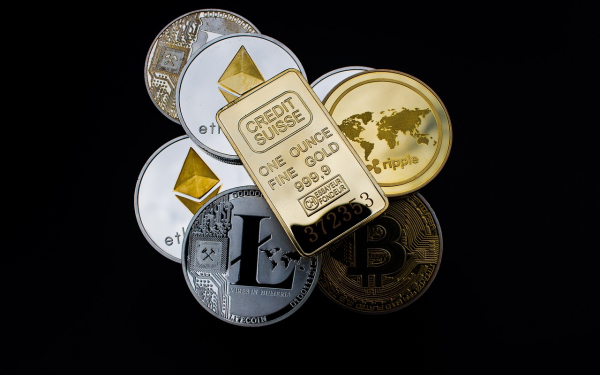
Banyan Gold Corp. (TSXV: BYN, OTCQB: BYAGF)
The New Yukon Gold Rush

Bitcoin has recently been gaining significant momentum, with a rise of over 45% in February. Rumors suggest that major financial institutions are advising high-net-worth clients to allocate 2%-3% of their portfolios to Bitcoin. This advice may have been a trigger for the recent surge in Bitcoin prices.
Additionally, since the introduction of Bitcoin spot ETFs in January this year, demand has seen explosive growth, with a single-day trading volume of up to a staggering $7.7 billion for 10 ETFs.
Although both Bitcoin and gold have shown strong trends recently, there is a clear difference in investor sentiment. Data shows that CoinStats’ cryptocurrency Fear and Greed Index is currently at extremely greedy levels, while JM Bullion’s gold Fear and Greed Index remains in the neutral range.
Another interesting data point reveals that as of February 29th, the total holdings of U.S. Bitcoin ETFs amount to $43.2 billion, nearly half of the total holdings of all gold ETFs at $92.3 billion.
While Bitcoin is often referred to as “digital gold,” the 10-day standard deviation for gold prices is ±3%, compared to Bitcoin’s ±25%. This indicates that Bitcoin has significantly higher volatility and risk compared to gold. Typically, high risk is associated with high returns. Over the past 6 months (up to the end of February), Bitcoin prices surged by 130%, while gold prices increased by just over 5% during the same period, and the NYSE Arca Gold Miners Index, reflecting major gold producers, declined by 9%.
It is uncertain if the sharp rise in Bitcoin prices and the popularity of Bitcoin ETFs have diverted investment funds from gold. However, since 2023, the disconnect between gold prices and gold ETFs is evident. While gold prices have been fluctuating upwards, funds from gold ETFs have been consistently flowing out. This phenomenon is likely the result of multiple factors at play, such as changes in investor sentiment, monetary policy, portfolio balancing, and exchange rate fluctuations.
Moreover, an analysis of 85 gold mining stocks reveals that despite the gold price increase of over 13% in 2023, the financial condition of gold miners has worsened. Out of these companies, only 47 (55%) reported positive Free Cash Flow (FCF) yield as of December 31, 2023, which is almost similar to the previous year (48 companies). However, in December 2022, there were 23 gold producers with positive FCF and higher sales growth rates than the rise in the price of gold, which decreased to 10 companies (approximately 12%) a year later.
In recent months, there has been a shift in what drives gold prices. For decades, gold prices have had an inverse relationship with real interest rates. However, since the outbreak of the pandemic in 2020, this pattern has been disrupted, with the previously high negative correlation converting to a positive one, leading to more simultaneous increases and decreases.
Today, central bank gold purchases have become a new driving force for gold. Since 2010, financial institutions, especially central banks of emerging economies, have been net buyers of gold to reduce their reserve assets’ dependence on the U.S. dollar.